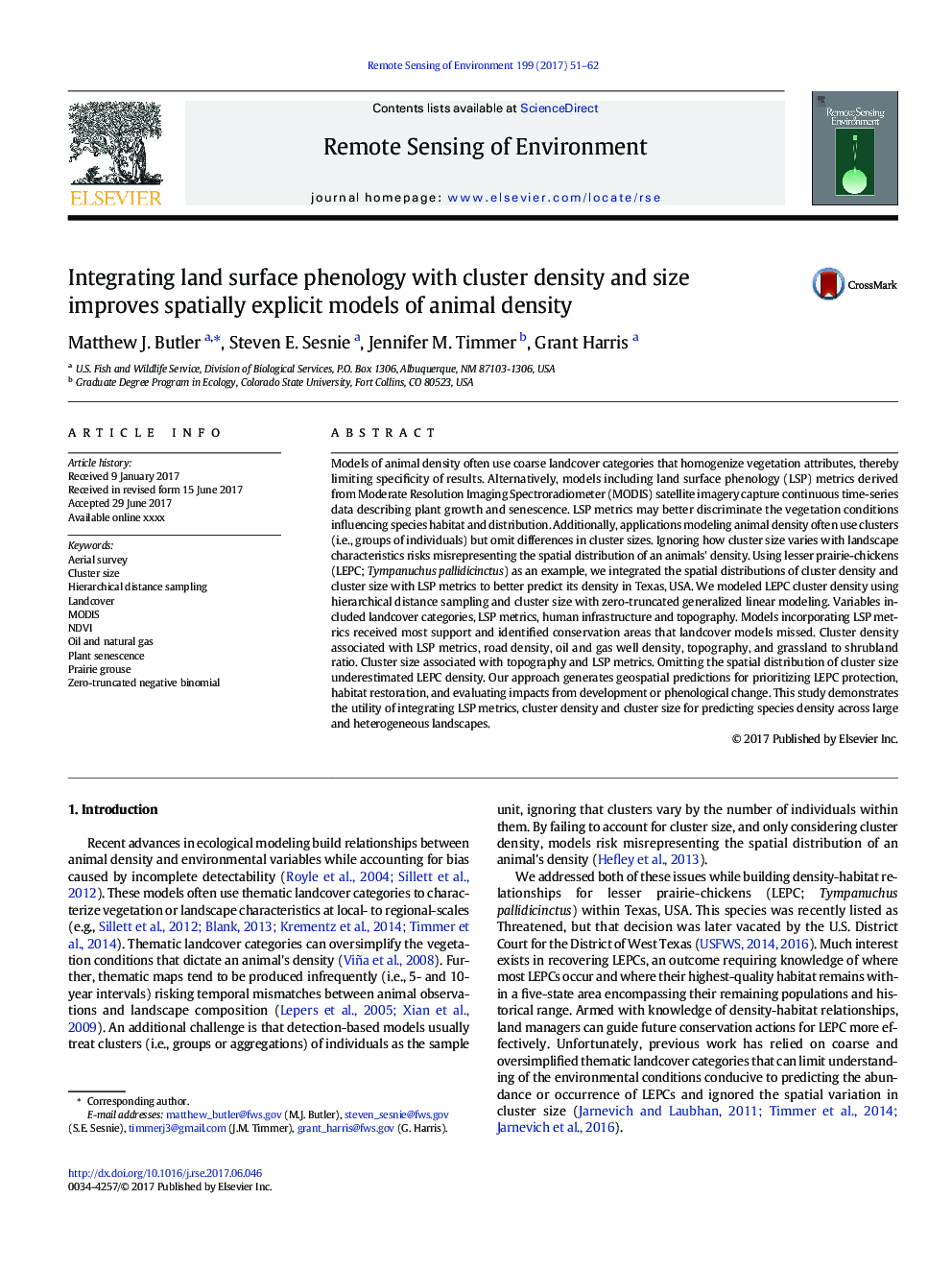| کد مقاله | کد نشریه | سال انتشار | مقاله انگلیسی | نسخه تمام متن |
|---|---|---|---|---|
| 5754832 | 1621201 | 2017 | 12 صفحه PDF | دانلود رایگان |
عنوان انگلیسی مقاله ISI
Integrating land surface phenology with cluster density and size improves spatially explicit models of animal density
ترجمه فارسی عنوان
ادغام فنولوژی سطوح سطحی با تراکم و اندازه خوشه، مدل های مکانی صریح چگالی حیوان را بهبود می بخشد
دانلود مقاله + سفارش ترجمه
دانلود مقاله ISI انگلیسی
رایگان برای ایرانیان
کلمات کلیدی
موضوعات مرتبط
مهندسی و علوم پایه
علوم زمین و سیارات
کامپیوتر در علوم زمین
چکیده انگلیسی
Models of animal density often use coarse landcover categories that homogenize vegetation attributes, thereby limiting specificity of results. Alternatively, models including land surface phenology (LSP) metrics derived from Moderate Resolution Imaging Spectroradiometer (MODIS) satellite imagery capture continuous time-series data describing plant growth and senescence. LSP metrics may better discriminate the vegetation conditions influencing species habitat and distribution. Additionally, applications modeling animal density often use clusters (i.e., groups of individuals) but omit differences in cluster sizes. Ignoring how cluster size varies with landscape characteristics risks misrepresenting the spatial distribution of an animals' density. Using lesser prairie-chickens (LEPC; Tympanuchus pallidicinctus) as an example, we integrated the spatial distributions of cluster density and cluster size with LSP metrics to better predict its density in Texas, USA. We modeled LEPC cluster density using hierarchical distance sampling and cluster size with zero-truncated generalized linear modeling. Variables included landcover categories, LSP metrics, human infrastructure and topography. Models incorporating LSP metrics received most support and identified conservation areas that landcover models missed. Cluster density associated with LSP metrics, road density, oil and gas well density, topography, and grassland to shrubland ratio. Cluster size associated with topography and LSP metrics. Omitting the spatial distribution of cluster size underestimated LEPC density. Our approach generates geospatial predictions for prioritizing LEPC protection, habitat restoration, and evaluating impacts from development or phenological change. This study demonstrates the utility of integrating LSP metrics, cluster density and cluster size for predicting species density across large and heterogeneous landscapes.
ناشر
Database: Elsevier - ScienceDirect (ساینس دایرکت)
Journal: Remote Sensing of Environment - Volume 199, 15 September 2017, Pages 51-62
Journal: Remote Sensing of Environment - Volume 199, 15 September 2017, Pages 51-62
نویسندگان
Matthew J. Butler, Steven E. Sesnie, Jennifer M. Timmer, Grant Harris,
